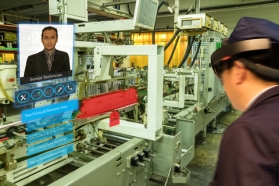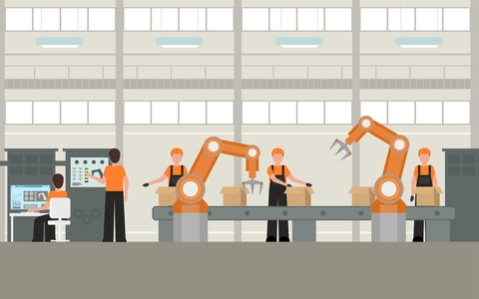Industry 4.0 and the Manufacturing Facilities of Tomorrow
On May 16, I attended the ISPE event Pharma 4.0: The Next Industrial Revolution in Manufacturing for Automation, Controls, and Decision Making. Technology is advancing at an ever-increasing pace, and it can be difficult to keep up with the newest innovations.
One of the major advances in recent years is called the Internet of Things, or IoT. IoT is a series of technologies that allow things to connect to the internet, so that they can be remotely controlled or can interact with other things. It seems like stuff of the future, but in the past few years IoT-enabled devices have become household names (Alexa, turn on the living room light). Many of us use these devices in our everyday lives, but how can IoT be applied to manufacturing facilities? Very easily, it turns out.
Reality Check
One of the easiest ways to integrate IoT is through Virtual and Augmented Reality. Augmented Reality (AR) is a method used to overlay virtual aspects to a real-world view. For example, training modules can be developed using an overhead camera and a screen to display the recording. As the worker goes through tasks, images are overlaid on the real-time recording on the screen to direct the worker on the next task.
Virtual Reality (VR) is similar, but instead of images overlaid on a real-time recording, an immersive environment is created, and the user’s vision is through a VR headset. VR can be used for training workers on remote or expensive pieces of equipment, or for performing remote site walkthroughs. VR modules can even be integrated with motors so that the user can feel the experience they’re seeing. An example would be for truck driver training, where the trainee would sit in a simulated truck cab with a VR headset. As they go over bumps and around turns in the simulation, the truck cab would move in a responsive manner.
Thanks for Sharing
Some IoT technologies rely on data sharing, which might be a difficult concept in an industry where data is a closely-guarded secret.
One of the easiest ways to see where data sharing might be useful is for predictive supply chain management. Many of us have taken advantage of Amazon’s subscription service, where you select an item and a delivery interval. Planned delivery like this is particularly useful when it’s something with a known usage rate. However, what if the material is used at a variable rate? By sharing material usage data with suppliers, material can be automatically ordered when the on-hand supply reaches a pre-set level, independent of the rate of usage. If usage patterns are known by the suppliers, supplies could even be automatically ordered in advance if the supplier is facing long lead times.
Self Diagnosis
Predictive Maintenance is another potential use for IoT integration in manufacturing facilities. When equipment breaks down, it can cause delays, deviations, and even batch discards. However, by analyzing certain indicators of equipment performance and status, you might be able to see an issue emerging before it becomes a batch-ruining disaster. Now, what if the equipment reported these indicators itself, without the need for operator intervention? With correct integration, the equipment could even order maintenance for itself, with no need for oversight or intervention by an operator, long before an equipment performance issue causes an error or ruins a batch.
Final IoT Thoughts
These are just a few examples of the technologies available to us today, and it’s easy to get overwhelmed by the options. The most important thing to remember when integrating new technologies is to select technology to make an existing task easier and more efficient. Adopting a technology to try and find a use for it can complicate and slow progress. Remember to not get caught up in the hype, and you, too, can participate in designing the manufacturing facility of the future.
Written By: Taylor Frederick, Consultant III



